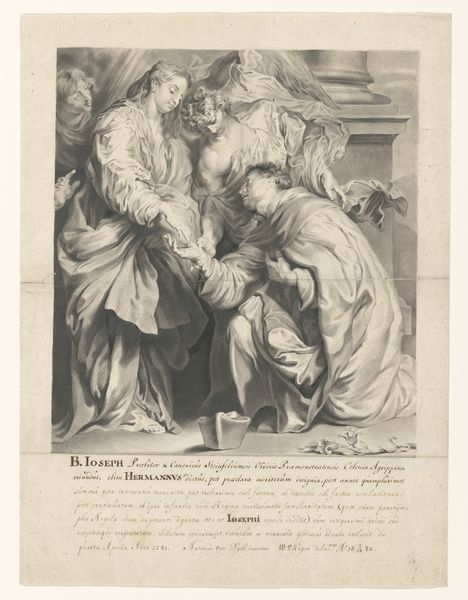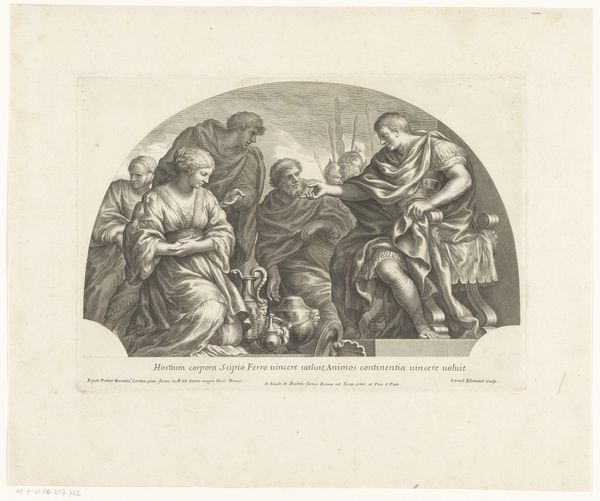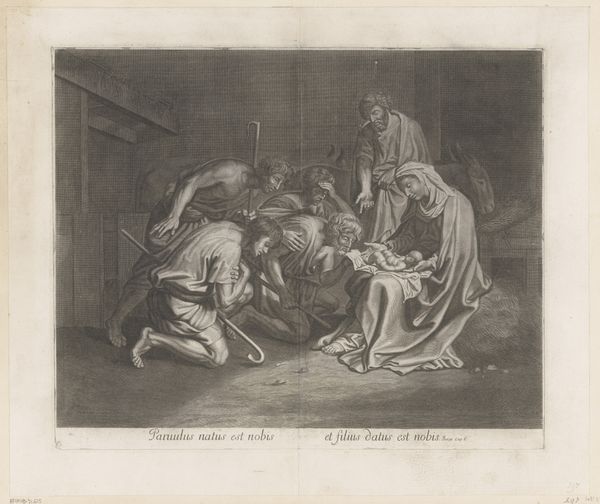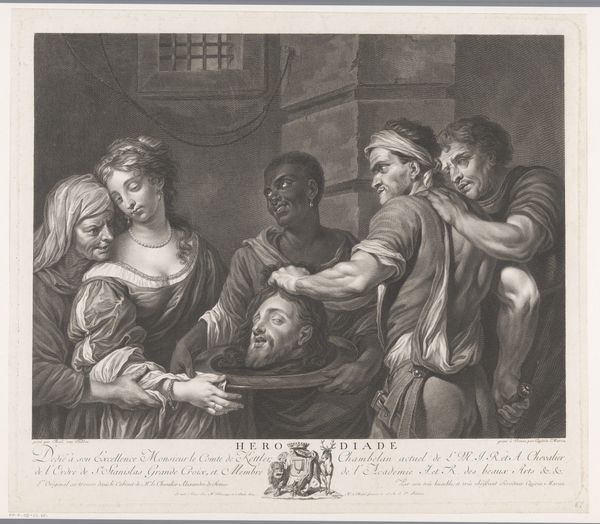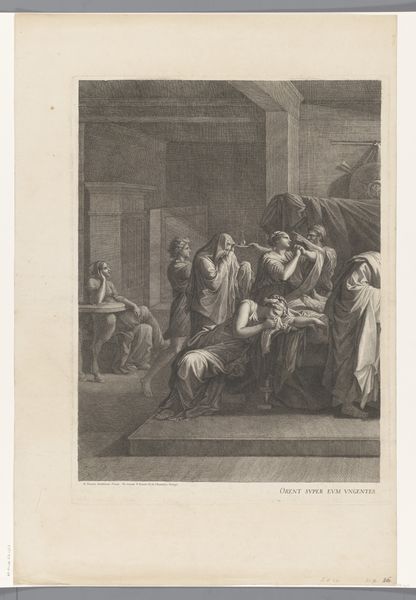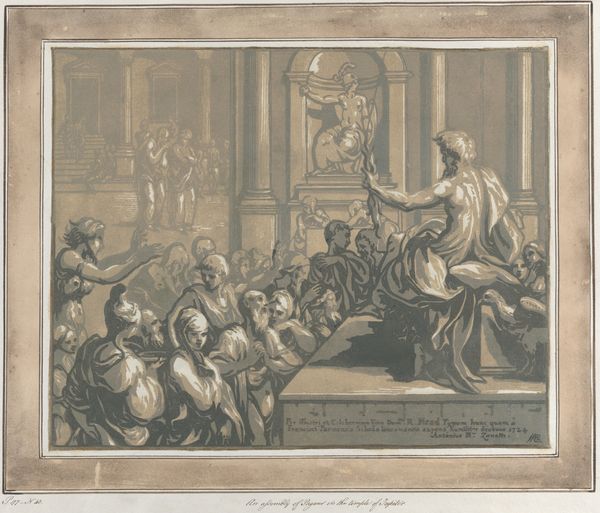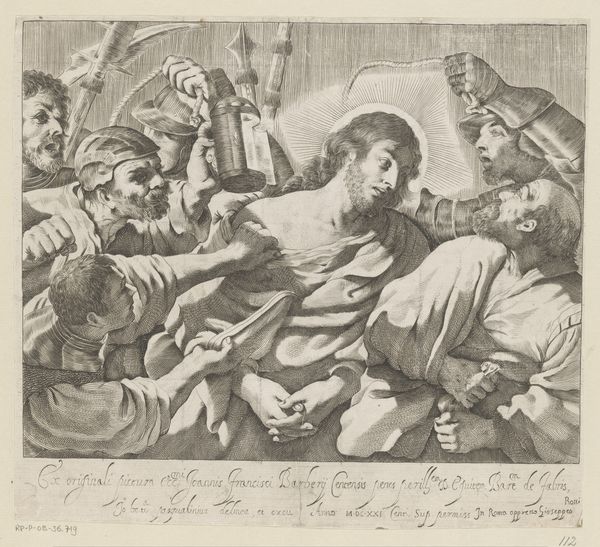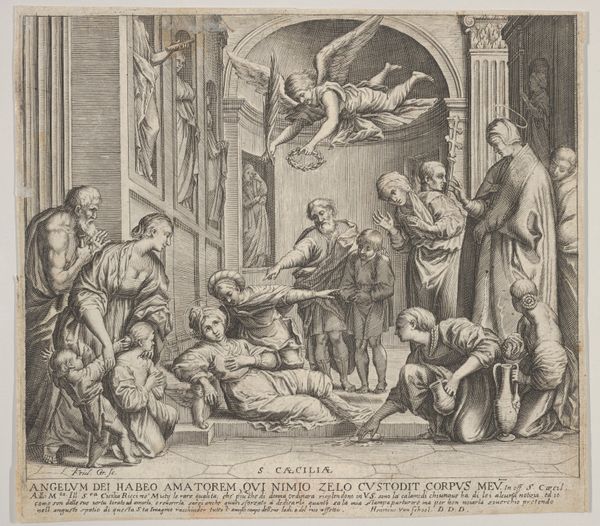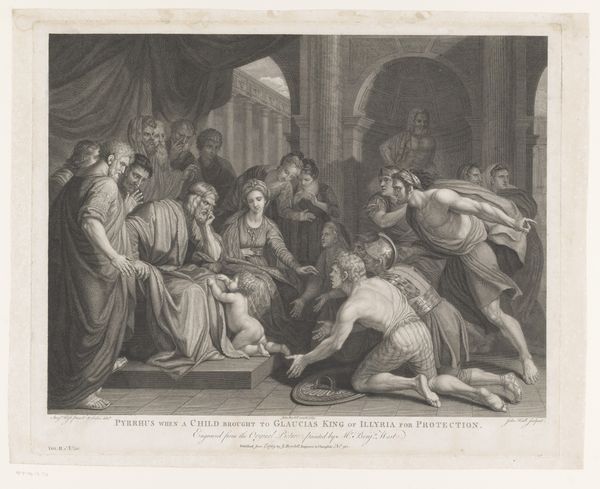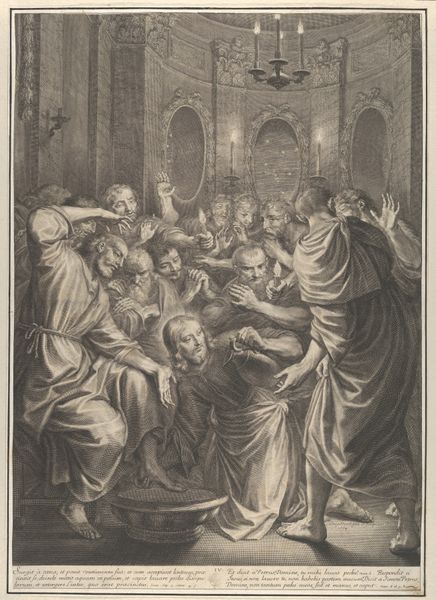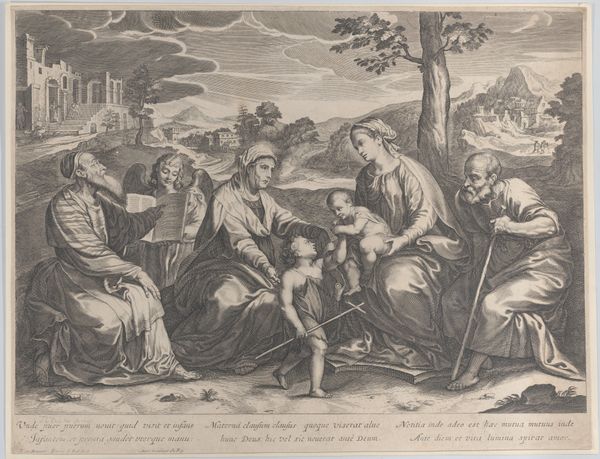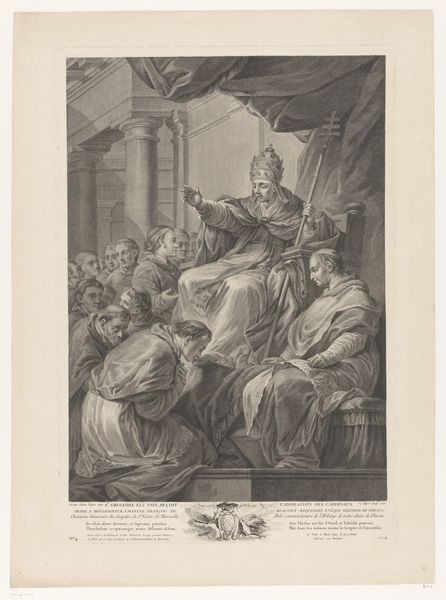
Christ and the woman taken in adultery 1750 - 1757
0:00
0:00
drawing, print, engraving
#
drawing
#
narrative-art
#
baroque
# print
#
figuration
#
history-painting
#
engraving
Dimensions: Plate: 13 3/4 × 15 9/16 in. (35 × 39.5 cm) Sheet: 14 3/4 × 18 1/4 in. (37.5 × 46.4 cm)
Copyright: Public Domain
This print, "Christ and the woman taken in adultery," was made by Giuseppe Camerata II in the 1700s, using a copper plate. The image wasn't drawn freehand; it was achieved by meticulously incising lines into the metal. Consider the labor involved: the artist had to master the techniques of engraving, using specialized tools to translate an existing painting into a new medium. The precision and detail speak to the engraver's skill, and the expectations of the market for reproductive prints at the time. Prints like this one played a crucial role in disseminating images and ideas to a wider audience, before photography. They made art more accessible, contributing to a visual culture that was increasingly shaped by mass production and consumption. So, while this print may seem like a straightforward copy, it's really a complex intersection of artistic skill, reproductive technology, and social context. By understanding the processes and materials involved, we can better appreciate the cultural significance of this seemingly simple image.
Comments
No comments
Be the first to comment and join the conversation on the ultimate creative platform.
